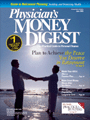Explore the Vast Mutual Fund Universe
The
answer:
Acommon question asked in theinvestment asset allocation processis how do you come to pick aparticular fund? Do you make a choice byreading some popular investment orfinancial publication or by selecting afund that seems to be winning a popularitycontest in the investment world? None of the above.
Because a secure retirement depends onhow well you invest, you should employ arigorous set of sorting criteria when selectinga particular fund, whether it be large,mid, or small cap, or growth, value, orblend. The same holds true for the fixed-incomeside of the equation. When all issaid and done, the cream should rise to thetop. The following questions are not a collectivelyexhaustive list of the criteria utilizedin the selection process, but they dorepresent a pretty thorough list of the criteriaused in creating the pool of contendersfrom which to choose the one ortwo funds best positioned to accomplishyour earnings objective:
•What is the fund's investment objective?Is it growth?
•Is the fund a domestic fund or doesit have international exposure? If it doeshave international exposure, what is thefund's regional exposure?
•What are the sector weightings? Isthe fund heavily weighted in health careservices or the financial services sector?
•What is the fund's percentageranking in its peer group on a 1-year, 3-year, and 5-year performance basis?Does the fund rank consistently in thetop quartile of its peer group over thetime period in question?
• Do any purchase constraints exist?For instance, is the fund still open to newinvestors or only to existing investors?n Is this investment going to be held inan IRA account?
•Are there any front-end loads ordeferred sales charges incurred wheneither buying or selling the fund?
•What are the fund's internal managementfees and operating expenseratios? You will find that indexed funds orelectronically traded funds have lowerinternal expenses.
•During previous bear markets, howhas the mutual fund performed relativeto its peer group?
•Who is the fund manager and whatis their tenure with running the particularfund in question?
•Are there at least 50 holdings in thefund and no more than a 25% concentrationin the fund's top 10 holdings? Afund that has, for instance, 10% of itsholdings in one particular companywould lack diversification.
•What are some of the fund's statistics?For example, what is its alpha,beta, price-to-earnings ratio, price-to-bookratio, and Sharpe ratio?
You might notice the above criteriaaren't sorted by annualized returns.Aren't annualized returns what it is allabout anyway? Hopefully, if you followthe criteria, the better funds are eventuallygoing to be the ones selected, and theirreturns will reflect this. Obviously, onealso has to take other things into consideration,such as their risk tolerance, timehorizon, etc. But with all other thingsbeing equal, utilizing such criteria in aselection process for asset allocation isgoing to give you broad diversification,mitigate volatility, and yield a competitiverate of return at the end of the day.
and his partner, Harris L. Kerker, are principals
of the Asset Planning Group in Miami, Fla, specializing in
investment, retirement, and estate planning. Mr. Kosky teaches corporate
finance in the Saturday Executive and Health Care Executive MBA Programs at the University of
Miami. He welcomes questions or comments at 800-953-5508, or visit www.assetplanning.net.
Thomas R. Kosky, MBA,
